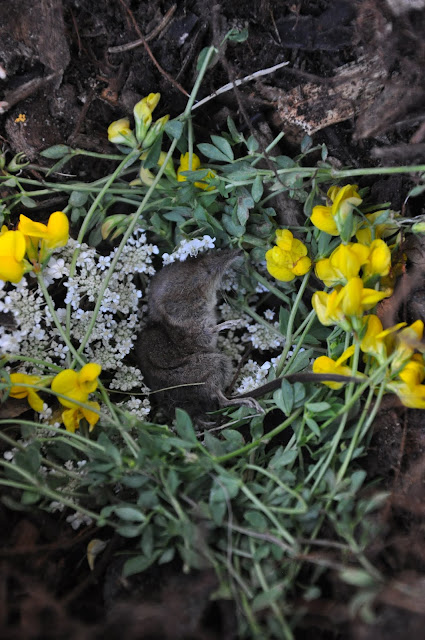Sci Fri: Mice & Shrews
Our pines have become the graveyard of local wildlife; baby birds fallen out of nests, swallows, a kitten that was left behind by the Great Horned Owl. Farm life goes hand-in-hand with learning about all parts of the living world, ending in death. The kids are quite determined to give every animal the proper burial, complete with a soft landing and flowers.
It always reminds me of one of my favourite books 'The Dead Bird'; a group of children having a funeral and singing homemade songs for a bird found in the park.
Then the coroner work begins as the kids try to determine the cause of death.
Oftentimes we chance upon an animal that has no obvious injuries, so starvation, abandonment, illness is considered the cause. Other animals, like frogs and toads are often found severely injured but uneaten, ruled as foul play (read: playful stray cats). Still others, like birds have injuries like broken wings that perhaps did not allow them to find their water source before dehydration. On very happy occasions, we find the animals in peril and keep them safe until they are healed and set out into the wild again.
We have a local animal shelter that accepts every variety of wildlife for repair. In instances that we cannot nurse them back to health, we have taken them to this country retreat.
Taking a look at the shrew, in early stages of development, mirrored many things we were reading about the life cycle of a mouse, although a shrew is not classed as a rodent. They are more closely related to hedgehogs and moles.
Then the coroner work begins as the kids try to determine the cause of death.
Oftentimes we chance upon an animal that has no obvious injuries, so starvation, abandonment, illness is considered the cause. Other animals, like frogs and toads are often found severely injured but uneaten, ruled as foul play (read: playful stray cats). Still others, like birds have injuries like broken wings that perhaps did not allow them to find their water source before dehydration. On very happy occasions, we find the animals in peril and keep them safe until they are healed and set out into the wild again.
We have a local animal shelter that accepts every variety of wildlife for repair. In instances that we cannot nurse them back to health, we have taken them to this country retreat.
Taking a look at the shrew, in early stages of development, mirrored many things we were reading about the life cycle of a mouse, although a shrew is not classed as a rodent. They are more closely related to hedgehogs and moles.
When it comes to science and history, DK Eyewitness Books are our top choice.
We have a wide range of topics from Medieval Times to Mammals to DaVinci. They cover umbrella topics like Trees or very specific species, such as Sharks. Full of photos and drawings and loaded with information.


